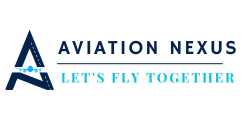Southwest Airlines reported a decline in second-quarter profit, yet the long-debated introduction of baggage fees and fare restructuring appears to be delivering early financial returns.
 Profit Decline Despite Revenue Hold‑Up
Profit Decline Despite Revenue Hold‑Up
For Q2 2025, Southwest posted net income of $213 million (or $0.39 per diluted share), down 42% year-over-year from $367 million in Q2 2024. Adjusted earnings came in at $230 million, or $0.43 per share—falling short of the $0.51 per share anticipated by analysts . Operating revenue dropped 1.5% to $7.2 billion, while passenger revenue fell 1.3% to $6.6 billion . Unit revenue (RASM) contracted by 3.1% even as capacity increased by 1.6% .
Weak domestic leisure demand and lower fares weighed on performance, eroding some of Southwest’s traditional cost advantage . As a result, its stock dropped as much as 11% in after-hours trading .
 Baggage Fees and Basic Economy Yield Results
Baggage Fees and Basic Economy Yield Results
Southwest’s decision to eliminate its decades-old “two bags fly free” policy in favor of $35 for the first bag and $45 for the second (with exemptions for elite flyers and select credit cardholders) has begun to bear fruit. The fee rollout launched on May 28, 2025, and according to management, exceeded initial revenue projections without disrupting operational functioning .
The airline attributes hundreds of millions in incremental earnings to these moves. In fact, bag fee revenue is projected to add $800 million in EBIT in 2025 and contribute toward a total of $1.7 billion in 2026—with broader initiatives expected to result in $4.3 billion in incremental EBIT by 2026 .
 Transformation Driving Ancillary Revenue Growth
Transformation Driving Ancillary Revenue Growth
The launch of the new Basic Economy fare tier alongside baggage charges initially dampened booking conversion online, but Southwest swiftly refined its customer interface and marketing strategy, restoring sales to expected levels. Leadership estimates this dynamic reduced Q2 RASM by about 0.5 point and will shave around one point off Q3 RASM .
Other product changes—like EarlyBird Check-In enhancements, bundled pricing, and basic vs. Choice Extra branded fares—are also generating meaningful ancillary revenue. Southwest has already retrofitted over 220 aircraft with extra-legroom seating, starting at no additional cost, ahead of a premium seat rollout planned for January 2026 .
 Financial Outlook & Shareholder Returns
Financial Outlook & Shareholder Returns
Southwest remains committed to cost discipline, targeting $370 million in cost savings for 2025, and aligning with its multi-year goal of $1.0 billion in run-rate savings by 2027 . Operating expense grew just 0.9% year-over-year in Q2, reaching $7.0 billion, though CASM‑X (excluding fuel) rose by 6.4% .
Management provided full-year 2025 EBIT guidance in the range of $600 million to $800 million, reaffirming its target of $1.8 billion in incremental EBIT for 2025 and $4.3 billion by 2026 from its transformation initiatives . A new $2 billion share buyback program was also authorized, signaling confidence in long-term returns .
 Brand Tradeoffs & Competitive Implications
Brand Tradeoffs & Competitive Implications
Southwest’s strategic pivot has drawn criticism from loyalists upset over the loss of historical perks. Analysts warn of possible erosion in market share—echoing earlier estimates that bag fees, while adding $1.5 billion in revenue, might risk $1.8 billion in lost market share .
Industry observers highlight the irony: Southwest now resembles the legacy carriers it once disrupted, adopting baggage fees, assigned seating, basic fares, and other traditional revenue drivers .
That said, the airline still safeguards premium perks for frequent flyers—elite A‑List Preferred members get two free bags; A‑List and Rapid Rewards credit cardholders receive one free bag—maintaining some loyalty insulation .

